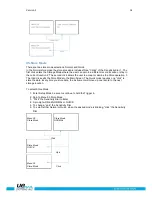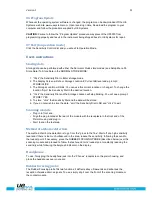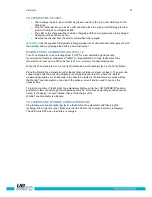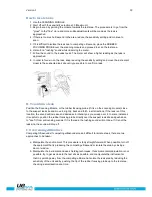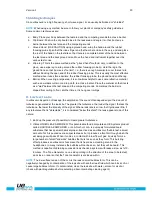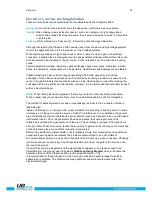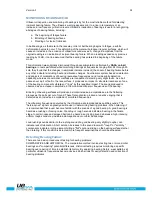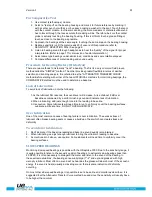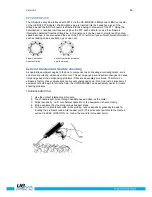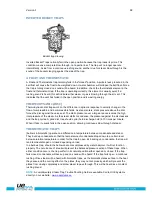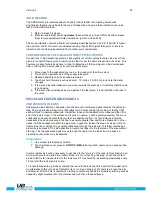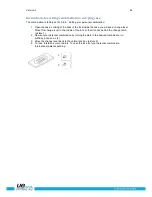
Version 1
28
INVERTED BUCKET TRAPS
Bucket trap drawing
Inverted Bucket Traps normally fail in the open position because the trap loses its prime. This
condition means a complete blow-through, not a partial loss. The trap will no longer operate
intermittently. Aside from a continuous rushing sound, another clue for steam blow-through is the
sound of the bucket clanging against the side
of the trap.
A FLOAT AND THERMOSTATIC
A Float and Thermostatic trap normally fails in the "closed" position. A pinhole leak produced in the
ball float will cause the float to be weighted down or water hammer will collapse the ball float. Since
the trap is totally closed no sound will be heard. In addition, check the thermostatic element in the
float and thermostatic trap. If the trap is operating correctly, this element is usually quiet; if a
rushing sound is heard, this will indicate
either steam or gas is blowing through the air vent. This
indicates that the vent has failed in the open position and is wasting energy.
THERMODYNAMIC (DISC)
Thermodynamic disc traps work on the difference in dynamic response to velocity change in the
flow of compressible and incompressible fluids. As steam enters, static pressure above the disc
forces the disc against the valve seat. The static pressure over a large area overcomes the high
inlet pressure of the steam. As the steam starts to condense, the pressure against the disc lessens
and the trap cycles. A good disc trap should cycle (hold-discharge-hold) 4-10 times per minute.
When it fails, it usually fails in the open position, allowing continuous blow through of steam.
THERMOSTATIC TRAPS
(bellows & bimetallic) operate on a difference in temperature between condensate and steam.
They build up condensate so that the temperature of condensate drops down to a certain level
below saturation temperature in order for the trap to open. By backing up condensate, the trap will
tend to modulate open or closed depending on load.
In a bellows trap, should the bellows become compressed by water hammer, it will not function
properly. The occurrence of a leak will prevent the balanced pressure action of these traps. When
either condition occurs, the trap will fail in its natural position either opened or closed. If the trap
fails closed, condensate will back up and no sound will be heard. If the trap fails open, a continous
rushing of live steam will be heard
with bimetallic traps, as the bimetallic plates set due to the heat
they sense and the cooling effect on the plates, they may not set properly which will prevent the
plates from closing completely and al-low steam to pass through. This will be heard as a constant
rushing sound.
NOTE:
A complimentary Steam Trap Trouble Shooting Guide is available. Contact UE Systems
directly on our website :
www.uesystems.eu

